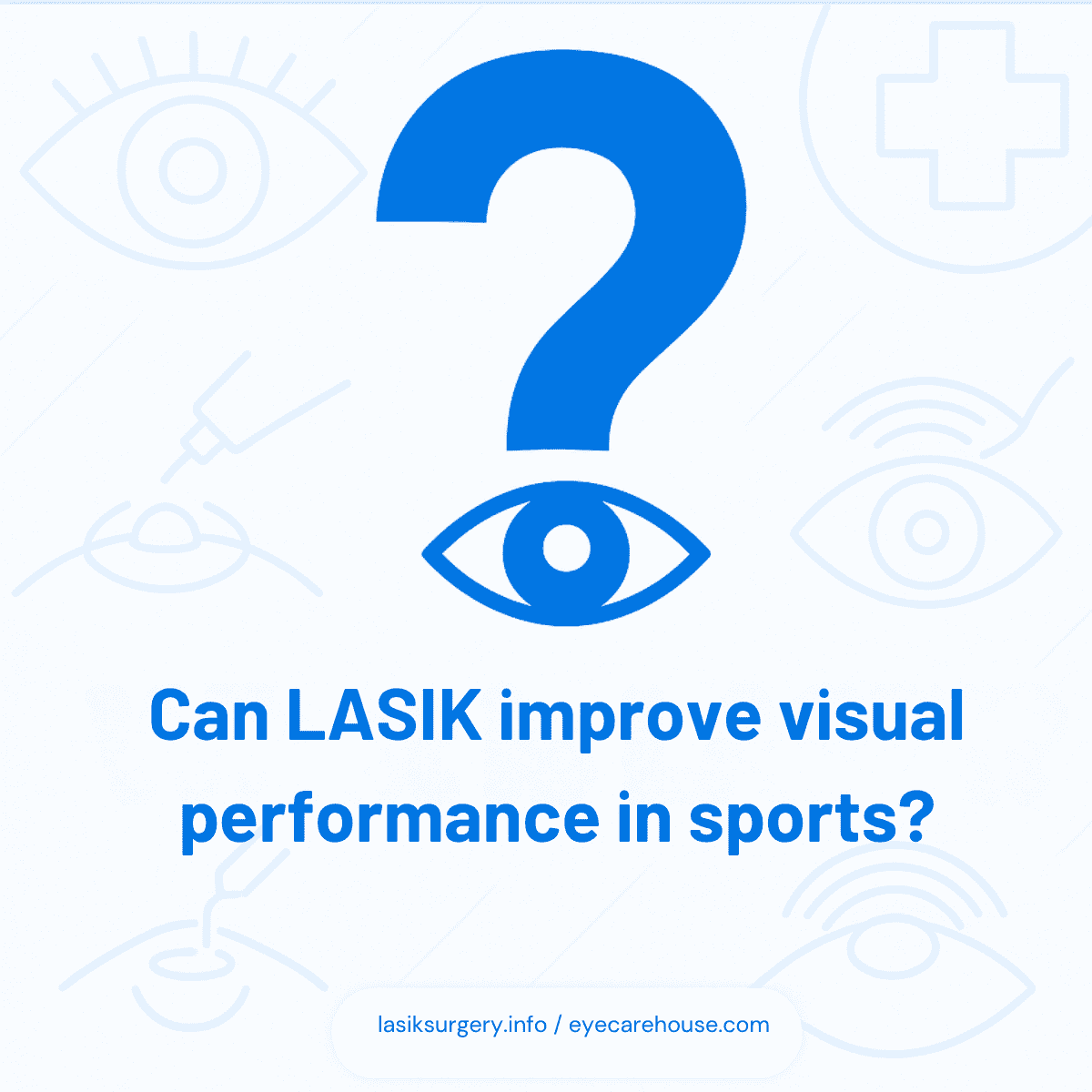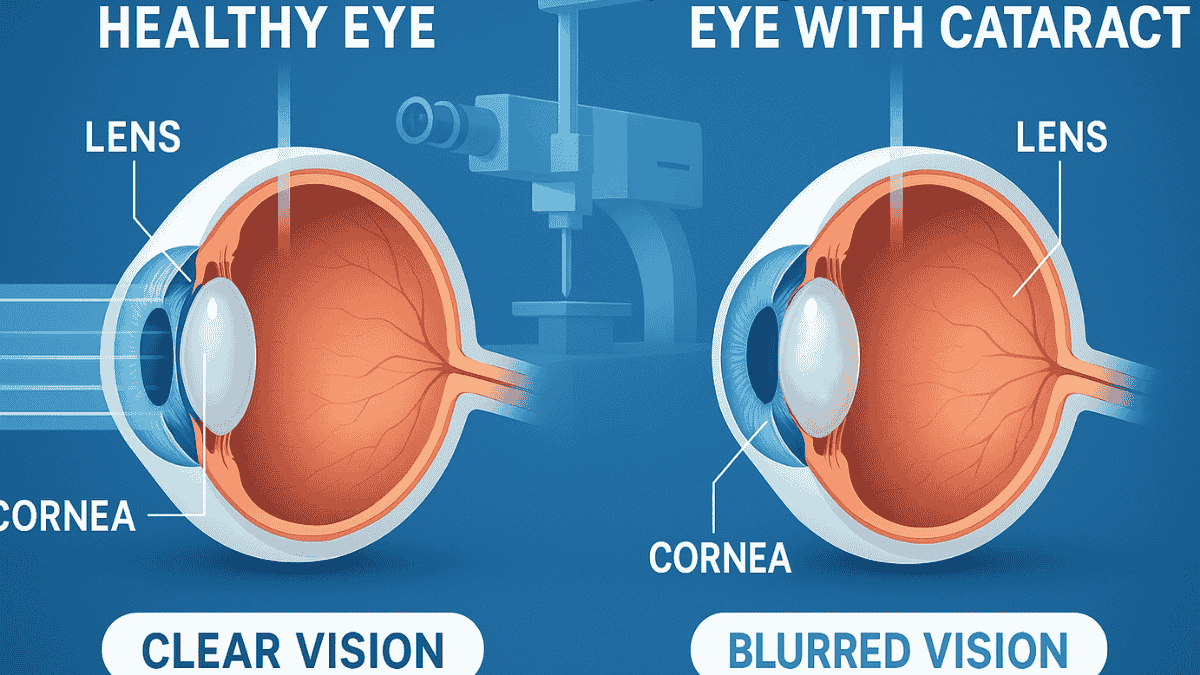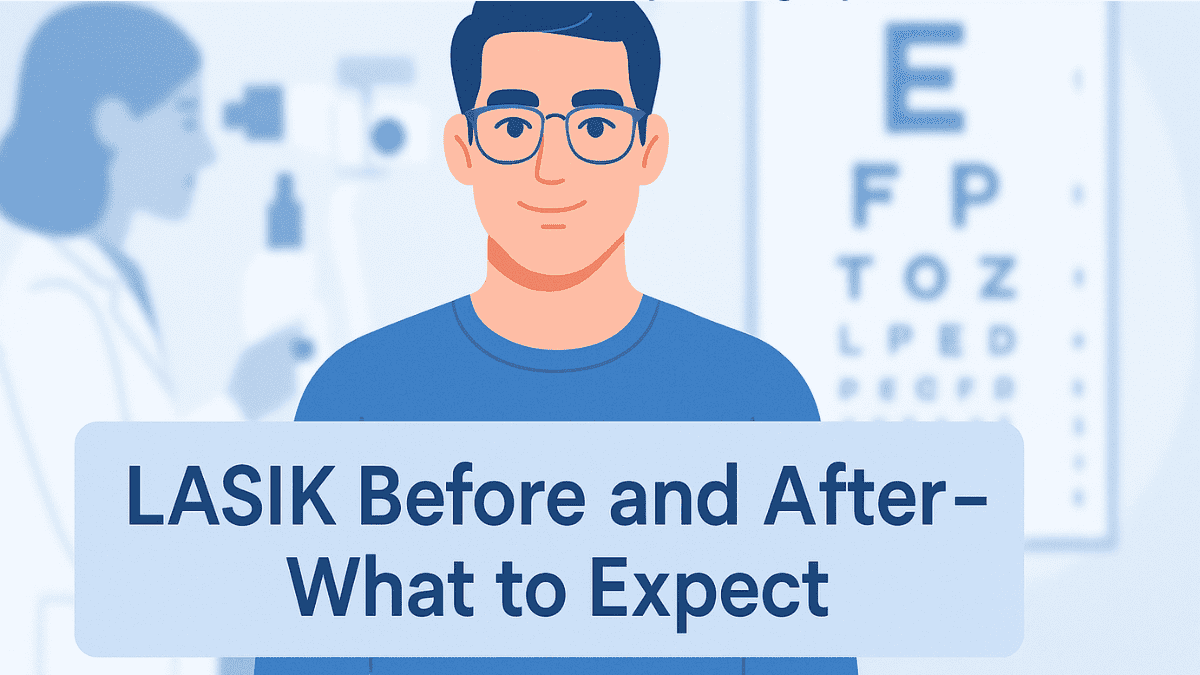
Thinking about LASIK? Many individuals consider this path to move away from daily reliance on glasses and contact lenses. Understanding the complete journey, from initial consultation to life after the procedure, is important. Let’s explore the details of LASIK before and after to help you see if this vision correction surgery is a good fit for you.
Table of Contents
What is LASIK?
LASIK, an acronym for Laser-Assisted In Situ Keratomileusis, is a popular type of laser eye surgery. This sophisticated eye surgery employs specialized lasers to precisely reshape the cornea, the clear front part of your eye. By altering the corneal shape, LASIK can correct common vision problems such as nearsightedness (myopia), farsightedness (hyperopia), and astigmatism.
The primary aim of the LASIK procedure is to enhance your natural vision, reducing or even eliminating the need for corrective eyewear. Many people seek LASIK eye surgery for the freedom it offers. The surgery itself is notably quick, often completed in about 30 minutes for both eyes, making it a convenient option for vision correction.
Before LASIK: What to Expect
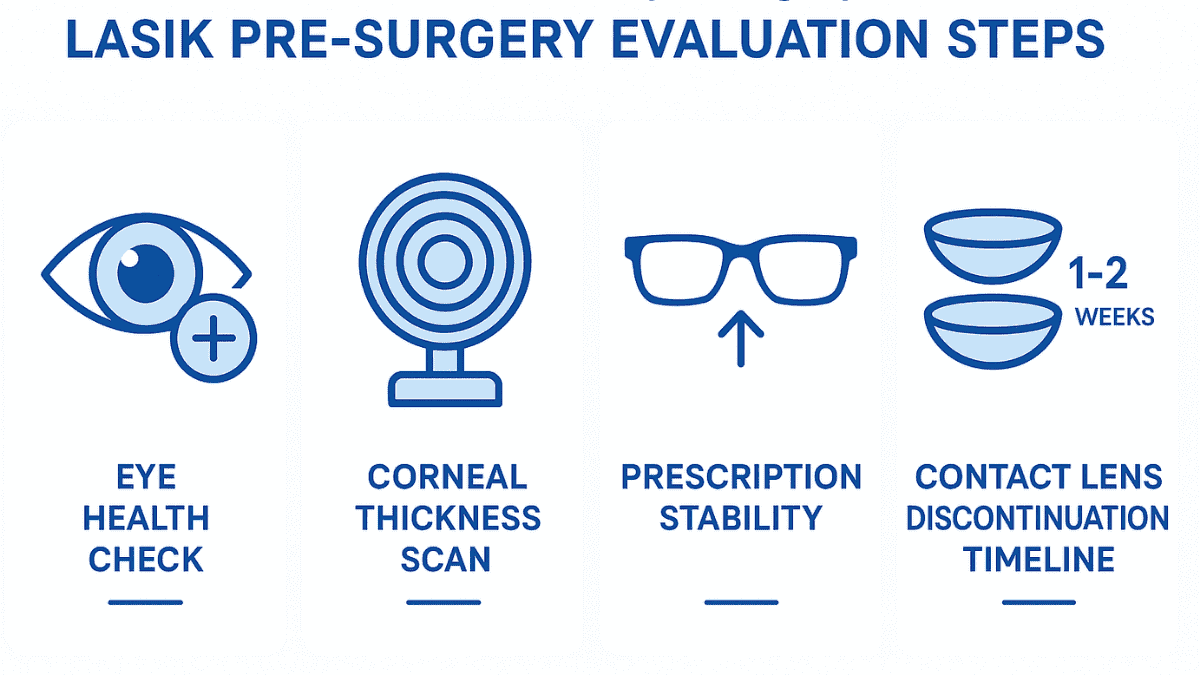
Your journey to clearer vision begins long before the actual LASIK surgery. A comprehensive eye exam with an experienced eye doctor is the first step. During this consultation, your doctor will determine if you are a good candidate for the laser eye treatment.
Several factors are assessed, including:
- Your general eye health, looking for any pre-existing eye conditions.
- The specific shape and thickness of your cornea tissue; precise eye measurements are crucial.
- Your current vision prescription and its stability over the past year.
- Any underlying systemic health conditions that might affect healing or increase risk.
If you regularly wear contact lenses, you will need to discontinue their use for a specified period before your evaluation and the surgery. For those who wear soft contact lenses, this period is usually shorter than for individuals using rigid gas permeable (RGP) or gas permeable lenses. This break from contact lens wear allows your corneas to revert to their natural, unaltered shape, which is vital for accurate pre-operative measurements.
Your eye doctor will also discuss potential risks and benefits, answer your additional questions, and ensure you understand the consent form. This is an important part of the eye care process, making sure you have all the information you need before proceeding with any eye treatment.
Related Article
What to Expect During a LASIK ConsultationPreparing for Surgery Day
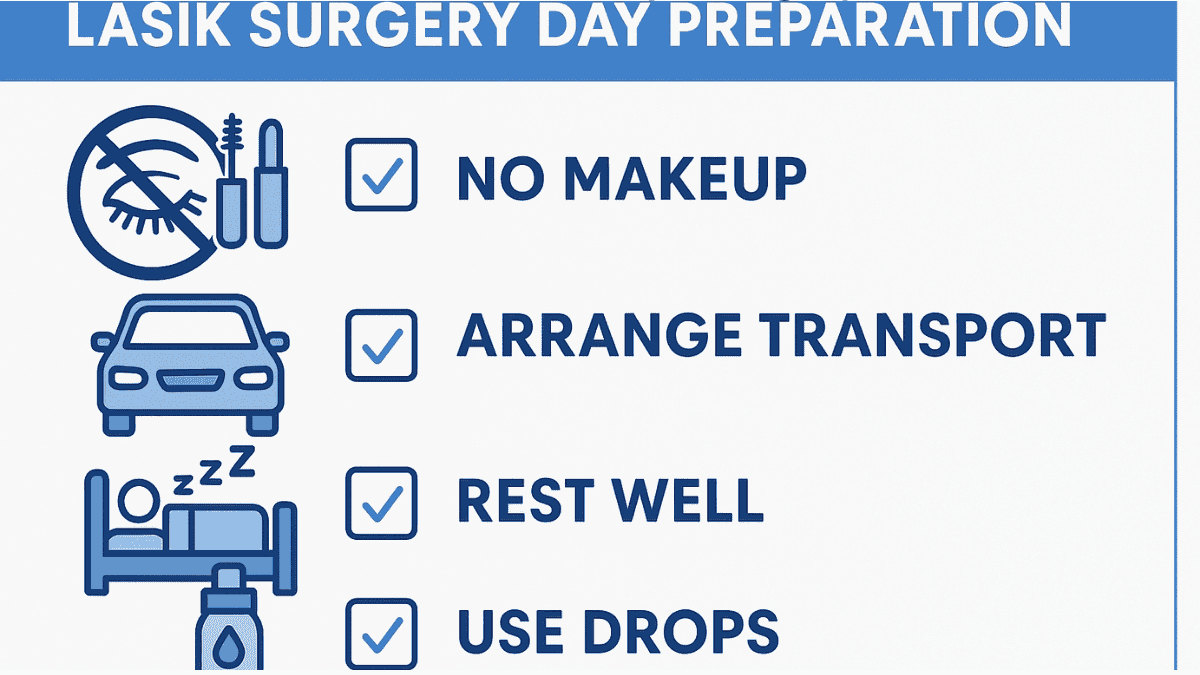
Once you are deemed a good candidate and your surgery date is set, specific preparations will help the surgery procedure go smoothly. Your eye center will provide detailed instructions. Generally, you will need to:
- Arrange for transportation home, as you will not be able to drive yourself due to initial blurred vision and medication effects.
- Avoid using eye makeup, creams, lotions, or perfumes around the eye area for a few days leading up to the surgery. This helps prevent infection. Specifically, avoid creams, lotions, and makeup to keep the surgical field clean.
- Follow your doctor’s instructions regarding any pre-operative medications, which might include antibiotic eye drops.
- Plan to avoid hot tubs and swimming pools for a period after surgery to reduce infection risk.
- Understanding and following these pre-operative guidelines are important for a successful outcome. Feel free to ask your doctor questions if anything is unclear.
Understanding and following these pre-operative guidelines are important for a successful outcome. Feel free to ask your doctor questions if anything is unclear.
Related Article
What to Expect on the First Day After LASIK Eye SurgeryThe LASIK Procedure: What Happens
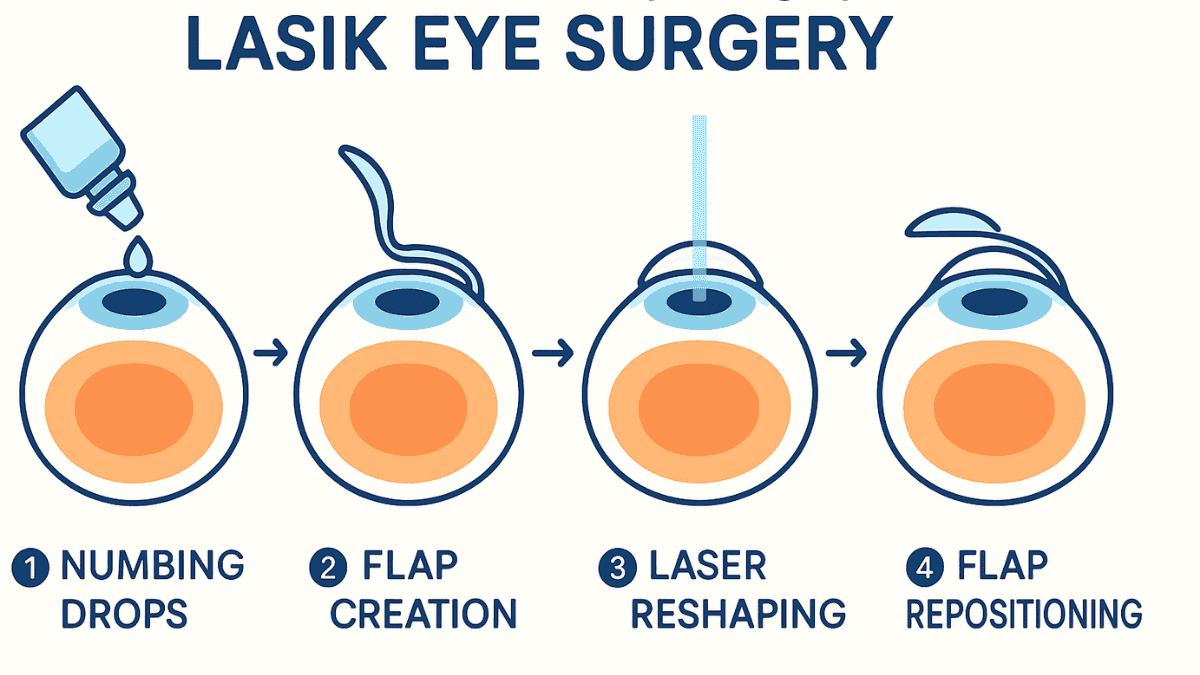
On the day of your LASIK eye surgery, you can expect a calm and controlled environment at the eye center. You will be awake during the surgery, but an oral sedative may be offered to help you relax. First, numbing eye drops are applied to your eyes to prevent any discomfort during the LASIK procedure.
Your eyelids will be gently held open using an instrument called a lid speculum to prevent blinking. A suction ring, sometimes referred to by patients as a ring eye, is then placed on the eye to stabilize it and create gentle pressure. This step is crucial for the precise creation of the corneal flap. You might feel a pressure sensation and your vision may dim or go dark for a few moments while the suction ring is active.
Next, the surgeon uses either a highly precise femtosecond laser or a mechanical microkeratome to create a thin, hinged flap in the outer layer of your cornea tissue. The flap is then gently lifted, exposing the underlying corneal tissue. You will be asked to focus on a target light while an excimer laser, programmed with your specific eye measurements, removes corneal tissue with remarkable accuracy. This laser removes corneal material, reshaping the cornea to correct your vision. Many patients report a faint odor similar to burning hair during this part, which is normal as the laser removes corneal cells.
The actual laser removal time is very short, often less than a minute per eye. Once the cornea is reshaped, the flap is carefully repositioned, where it adheres naturally without stitches. The entire surgery procedure is typically completed within 30 minutes for both eyes while you are in a reclining chair. You might experience mild pain or discomfort, but severe pain is uncommon.
LASIK Before and After: The Recovery Process
Immediately after your LASIK eye surgery, your vision will likely be somewhat blurry or hazy, and you may experience sensitivity to light. Some individuals report a gritty sensation or mild pain in their eyes. These initial visual symptoms are normal and part of the healing process. Your eye doctor will provide specific post-operative instructions and schedule follow-up visits at regular intervals.
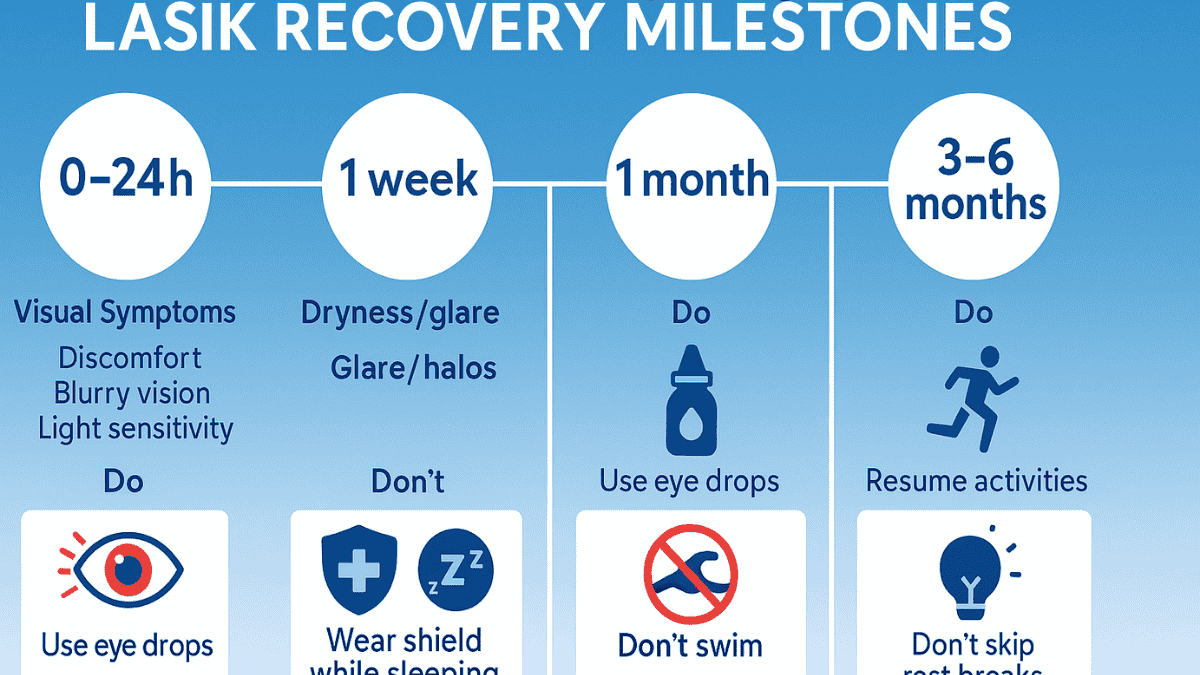
Related Article
Blurry Vision After LASIK: Causes and What to ExpectThe First 24 Hours
Rest is paramount during the first day. You will be instructed to go home and relax, keeping your eyes closed as much as possible. Protective eye shields are typically provided to wear, especially during sleep, to prevent accidental rubbing or pressure on your eyes. You will begin a regimen of prescribed eye drops, which usually include antibiotic drops to prevent infection and steroid drops to reduce inflammation. Using lubricating artificial tears frequently can also help manage any dry eye symptoms and promote comfort.
It’s common to experience some level of discomfort, but if you experience severe pain, you should contact your eye doctor immediately. Most patients notice their blurry vision starting to improve considerably within these first 24 hours.
The First Week
Most individuals can return to work and many normal activities within a day or two after LASIK surgery, though this depends on your job and healing progress. However, you should avoid strenuous contact sports and activities that could lead to an eye injury. It’s also important to avoid getting water directly in your eyes, so care should be taken when showering, and swimming in pools or hot tubs should be avoided to minimize the increased risk of infection.
Your vision will continue to clear during this week, though some fluctuations are normal. You’ll likely still be using prescribed eye drops, and your doctor may advise continued use of artificial tears to combat dry eye, a common temporary side effect. Avoid rubbing your eyes, and be careful with the eye area when cleansing your face. Lotions, makeup, and other cosmetics around the eyes should still be avoided for a short period, as per your doctor’s advice.
Related Article
Dealing with Dry Eye After LASIK: Causes and RemediesThe First Month and Beyond
By the end of the first month, a significant portion of the healing is usually complete, and your vision should be much more stable. You will have follow-up appointments with your eye doctor to monitor your progress and ensure your eyes are healing properly. These visits allow the doctor to check your vision and address any concerns or additional questions you might have.
While many side effects like dry eye and light sensitivity diminish over time, some individuals may continue to experience them for a few months. Consistent use of artificial tears can help manage dry eye symptoms. Most people find their vision stabilizes significantly within this period, though full stabilization can take up to three to six months. Your doctor will let you know when it is safe to resume all activities, including strenuous contact sports and using eye makeup.
Here’s a general recovery timeline, but remember individual experiences vary:
| Timeframe | Common Experiences & Recommendations |
|---|---|
| Immediately Post-Op | Vision blurry, light sensitivity, mild discomfort. Rest, use prescribed eye drops, wear eye shields. |
| 24-48 Hours | Significant vision improvement for many. Return to most non-strenuous activities. Continue eye drops. Avoid rubbing eyes. |
| 1 Week | Vision continues to improve. Avoid swimming, hot tubs, and strenuous contact sports. Follow eye drop schedule. Mild dry eye possible. |
| 1 Month | Vision generally clearer and more stable. Follow-up eye exam. Most daily activities resumed. Continue artificial tears if needed. |
| 3-6 Months | Full vision stabilization typically occurs. Most side effects resolve. Final visual outcome apparent. Discuss any lingering visual symptoms with your eye doctor. |
Related Article
LASIK Eye Surgery Risks: What You Need to KnowLASIK Results: What to Expect
LASIK eye surgery offers the potential for a dramatic improvement in vision, with many individuals achieving 20/20 vision or even better. The primary goal of this vision correction method is to reduce dependence on glasses or a contact lens. However, it’s important to understand that individual results can vary based on factors like your pre-operative prescription, corneal characteristics, and healing response.
LASIK eye surgery offers the potential for a dramatic improvement in vision, with many individuals achieving 20/20 vision or even better. The primary goal of this vision correction method is to reduce dependence on glasses or a contact lens. However, it’s important to understand that individual results can vary based on factors like your pre-operative prescription, corneal characteristics, and healing response.
Some individuals may still require glasses for specific activities, such as reading (especially as presbyopia develops with age) or driving at night, even after the LASIK procedure. Your eye doctor will discuss realistic expectations during your consultation.
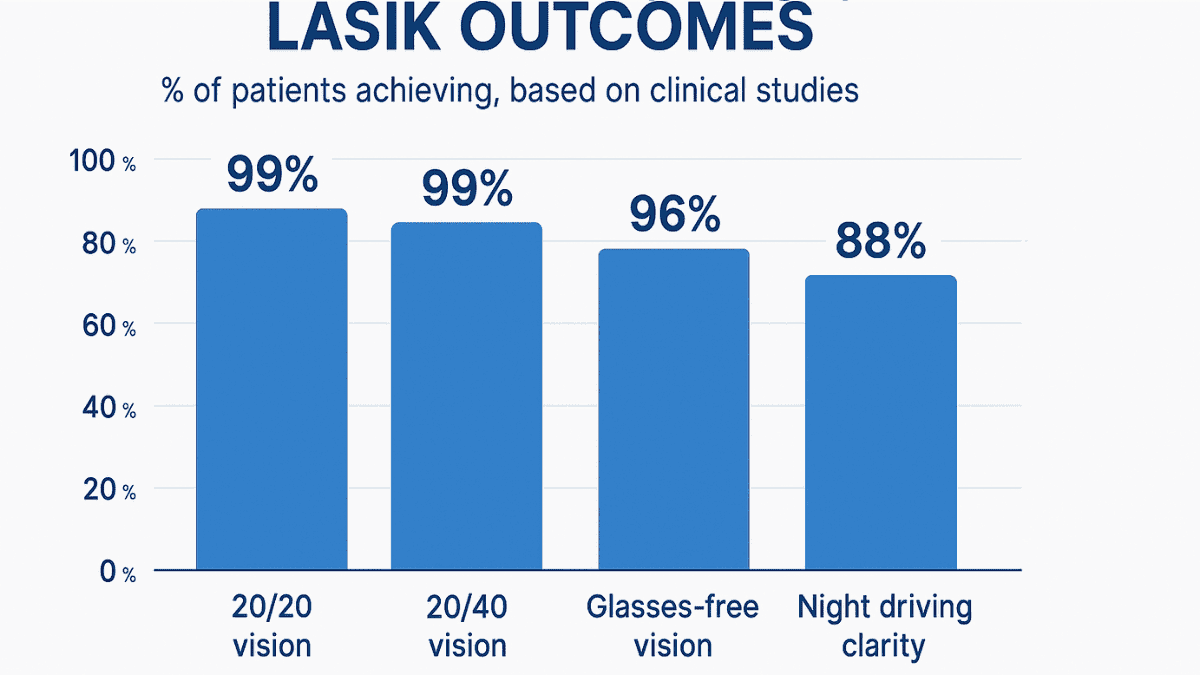
Common Vision Changes
After undergoing laser eye surgery, many patients report significant positive changes in their daily lives. These often include:
- Sharper, clearer vision without the need for corrective eyewear during most activities.
- Enhanced night vision for some, although others might initially experience glare or halos.
- More vibrant perception of colors, as the world is no longer viewed through a lens.
- Greater ease and enjoyment in activities like non-contact sports and various outdoor pursuits without the hassle of glasses or concern about losing a contact lens.
The convenience of waking up with clear vision is a frequently cited benefit that improves considerably the quality of life for many. It means no more fumbling for glasses or dealing with the daily routine of contact lenses.
Related Article
Is Laser Eye Surgery Worth It? Exploring the BenefitsPotential Side Effects
Like any eye surgery, LASIK is associated with potential side effects, though most are temporary and resolve as the eyes heal. Common temporary visual symptoms include:
- Dry eye: This is the most common side effect. Your doctor will likely recommend frequent use of artificial tears and other dry eye treatments if needed.
- Glare, halos, or starbursts around lights: These are often more noticeable at night and usually diminish over weeks or months. Difficulty driving at night can occur initially.
- Light sensitivity: You might experience sensitivity to bright lights for a period after the surgery.
- Temporary discomfort or irritation: A gritty feeling or mild pain is possible but typically manageable with eye drops.
Serious complications that lead to vision loss are rare, especially when the procedure is performed by an experienced surgeon at a reputable eye center. It’s crucial to report any concerning symptoms, such as severe pain or a sudden worsening of vision, to your eye doctor immediately. Understanding the potential for these side effects and how they are managed is part…
Related Article
Does LASIK Make Your Eyes Bigger? Myths and Facts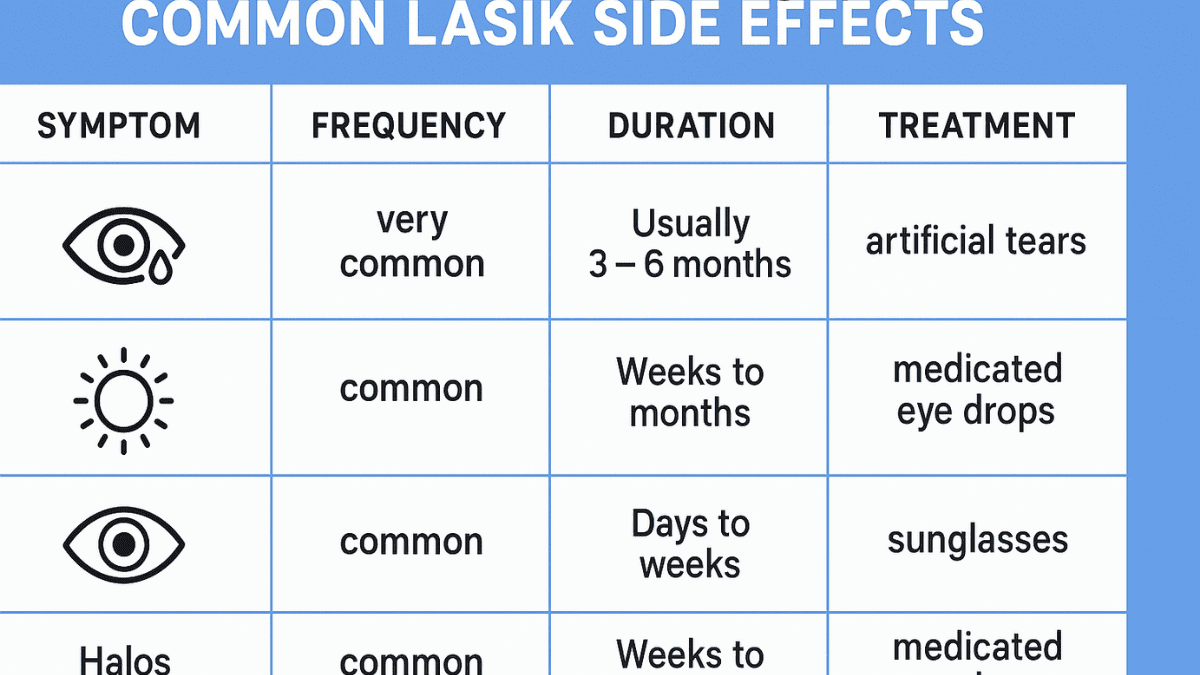
LASIK Before and After: Real Patient Experiences
Hearing from others who have undergone LASIK surgery can offer valuable perspective. Many share stories of transformation:
Sarah, 32, reflects: “Before LASIK, the first thing I reached for in the morning was my glasses. Now, I wake up and see my alarm clock perfectly. The freedom is incredible, especially when I travel or go swimming.”
Mike, 45, an avid participant in contact sports, says: “I was anxious about the surgery, but the LASIK procedure itself was surprisingly quick. My vision improved considerably within hours. Now, playing basketball without worrying about my contact lenses falling out or glasses breaking is a game-changer.”
Lisa, 28, comments on her recovery: “For the first few days after my LASIK eye surgery, I did experience dry eye, which was a bit annoying. But I used the artificial tears as recommended, and it got much better. A year later, I have no regrets and love not having to deal with the daily hassle of glasses or needing to wear contact lenses.”
These experiences highlight the positive changes many encounter, but remember, each patient’s journey and healing can differ. The stabilization period for vision can vary, and some might experience sensitivity for a while.
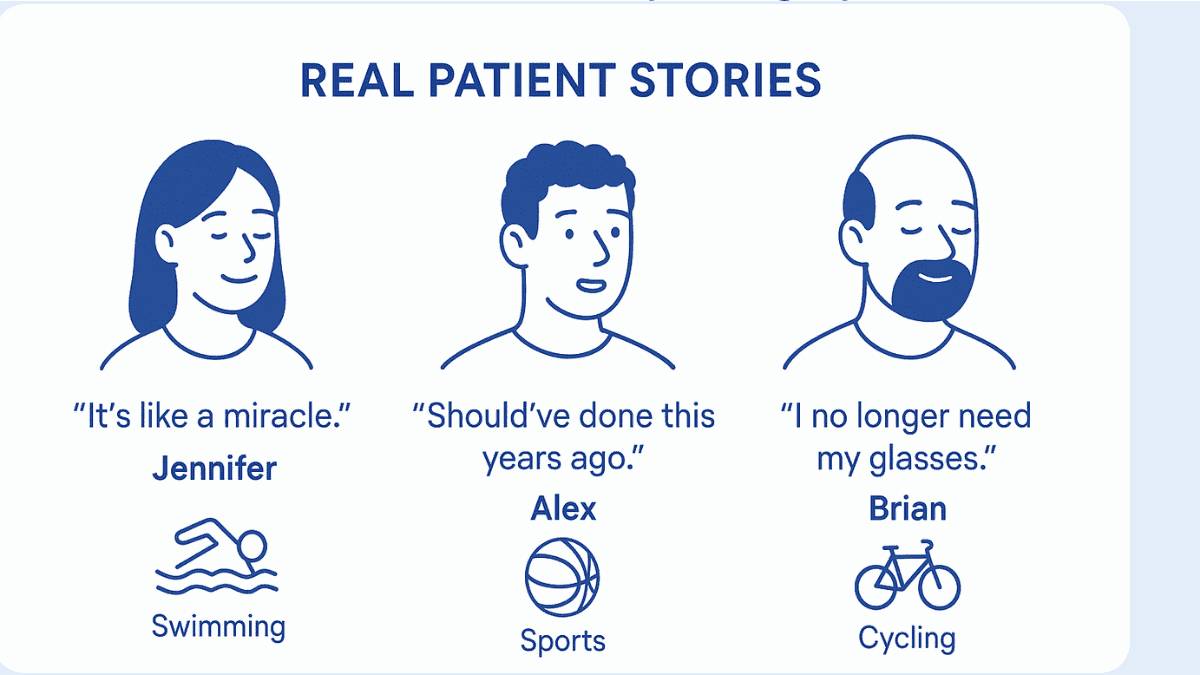
Is LASIK Right for You?
LASIK can be a fantastic option for vision correction, but it’s not suitable for everyone. You might be a good candidate for this type of eye surgery if you meet certain criteria:
- You are at least 18 years old, and preferably older, as vision tends to stabilize in early adulthood.
- Your eyeglass or contact lens prescription has been stable for at least one year, indicating your vision is not actively changing. This is often referred to as a stabilization period.
- You have a common refractive error like nearsightedness, farsightedness, or astigmatism within the range treatable by LASIK.
- Your eyes are generally healthy, free from significant eye conditions such as advanced glaucoma, keratoconus, or severe dry eye syndrome. Certain eye infections or injuries may also be contraindications.
- You are in good overall health; some autoimmune diseases or conditions that impair healing can increase risk.
- You are not pregnant or nursing, as hormonal changes can affect vision and healing.
- You have realistic expectations about the outcomes of the LASIK procedure.
A thorough eye exam and consultation with an experienced eye doctor are essential to determine your suitability. The doctor will perform detailed eye measurements, assess your corneal thickness and shape, and discuss any eye conditions that might influence the outcome. They will also discuss your lifestyle and visual needs to help decide if LASIK is the best eye treatment for you. If you often wear soft contact lenses or rigid gas permeable lenses, this will be a factor in your pre-operative evaluation.
LASIK Alternatives
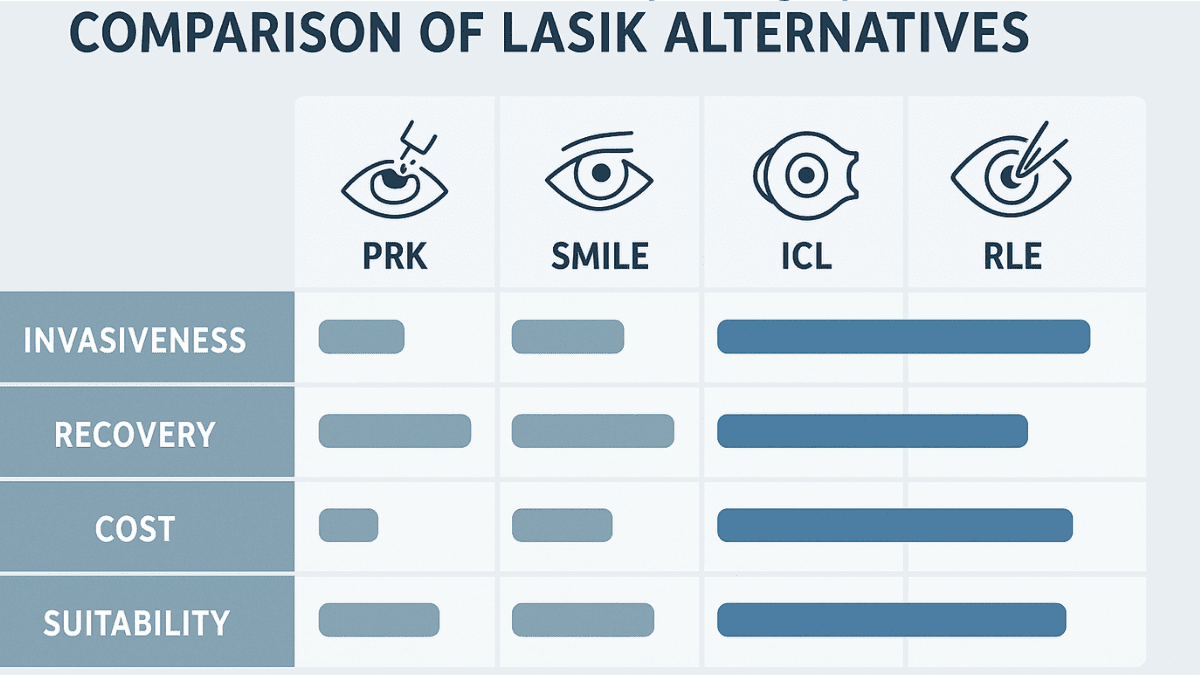
If LASIK is not the most suitable vision correction option for you, there are several other effective eye treatment alternatives available. Your eye doctor can discuss these with you:
- PRK (Photorefractive Keratectomy): This laser eye surgery reshapes the cornea without creating a flap. It may be a better option for individuals with thinner corneas or those involved in high-impact contact sports. The recovery can be longer than LASIK, with more initial discomfort.
- SMILE (Small Incision Lenticule Extraction): This is a newer, less invasive form of laser eye surgery. It involves creating a small lens-shaped piece of tissue (lenticule) within the cornea, which is then removed through a small incision.
- Implantable Collamer Lenses (ICLs): These are like permanent contact lenses surgically placed inside the eye. ICLs can correct higher degrees of nearsightedness and may be an option if LASIK or PRK are not suitable. This is different from cataract surgery where the natural lens is replaced.
- Refractive Lens Exchange (RLE): This procedure is similar to cataract surgery. The eye’s natural lens is removed and replaced with an artificial intraocular lens (IOL) that corrects the refractive error. RLE can also prevent future cataract development and can be an option for older individuals or those with high prescriptions or early signs of laser cataract formation.
Each alternative has its own set of benefits, risks, and candidacy criteria. A comprehensive discussion with your eye care professional will help you understand which, if any, of these procedures could meet your vision correction needs if LASIK is not the best path.
The Cost of LASIK
The cost of LASIK eye surgery is a significant consideration for many. It is generally considered an elective procedure, so it’s not typically covered by standard health insurance plans, though some vision plans might offer a discount. The price can vary widely, often ranging from $1,500 to over $3,000 per eye. This variation can depend on the technology used (e.g., custom wavefront LASIK, femtosecond laser for flap creation), the surgeon’s experience, and the geographic location of the eye center.
Many clinics offer financing plans or payment options to help make the LASIK procedure more affordable. When evaluating the cost, it’s also useful to consider the long-term savings from no longer needing to purchase glasses, contact lenses, and contact lens solutions. Over many years, LASIK can potentially be more cost-effective for some individuals who currently wear contacts or require frequent updates to their eyewear. Be sure to ask what is included in the quoted price, such as pre-operative exams, the surgery procedure itself, post-operative care visits, and any potential enhancement procedures if needed.
Related Article
LASIK Eye Surgery Cost: 2025Choosing a LASIK Surgeon
Selecting the right LASIK surgeon and eye center is perhaps the most critical step in your journey. Your comfort level with the surgeon and their team is very important. Here are some factors to consider:
- Board Certification and Experience: Look for an eye doctor who is board-certified in ophthalmology and has extensive experience performing LASIK and other refractive surgeries. Ask about their specific experience with cases similar to yours.
- Technology: Inquire about the laser technology the eye center uses. Modern lasers often provide more precise and customized treatments, potentially leading to better outcomes and fewer visual symptoms.
- Patient Reviews and Testimonials: Look for feedback from previous patients. Good reviews can provide insight into the patient experience at the clinic.
- Comprehensive Pre-Operative Evaluation: A reputable surgeon will conduct a thorough eye exam and detailed eye measurements to confirm you are a good candidate and to plan your specific treatment. They should take the time to answer all your doctor questions.
- Transparency: The surgeon should clearly explain the LASIK procedure, its benefits, potential risks, side effects like dry eye or blurred vision, and realistic outcomes. They should also discuss what happens if you experience severe complications, however rare.
- Follow-Up Care: Understand the post-operative eye care plan, including the schedule for follow-up visits and how any issues will be addressed.
Don’t hesitate to ask additional questions about success rates, complication rates, and what to do if you experience severe pain or unexpected visual symptoms after the surgery. A trustworthy surgeon will welcome your questions and provide clear, honest answers. It’s important to feel confident in your choice before signing any consent form.
Conclusion
The journey of LASIK before and after can be truly transformative for many, offering a life with reduced dependence on glasses and contact lenses. The prospect of waking up with clear vision, engaging freely in activities like contact sports, or simply enjoying the world without an optical aid is a powerful motivator. This vision correction option has helped countless individuals improve considerably their quality of life.
However, undergoing any eye surgery, including a LASIK procedure, requires careful consideration and realistic expectations. While the majority of patients are highly satisfied with their laser eye surgery results, perfect vision is not guaranteed, and potential side effects like temporary dry eye or visual symptoms such as glare can occur. It is important to understand how the laser removes corneal tissue and the subsequent healing involved for your eye fixed outcome.
If you are contemplating LASIK, the essential next step is a consultation with a qualified eye doctor at a reputable eye center. They can perform a comprehensive eye exam, assess your specific eye conditions and overall health, and provide personalized advice. Armed with accurate information and answers to all your additional questions, you can make an informed decision about whether LASIK is the right choice to help you achieve your vision goals.
FAQ
Immediately after LASIK, many patients notice brighter colors, sharper outlines, and reduced reliance on corrective lenses. Vision may be hazy in the first few hours but typically improves within a day.
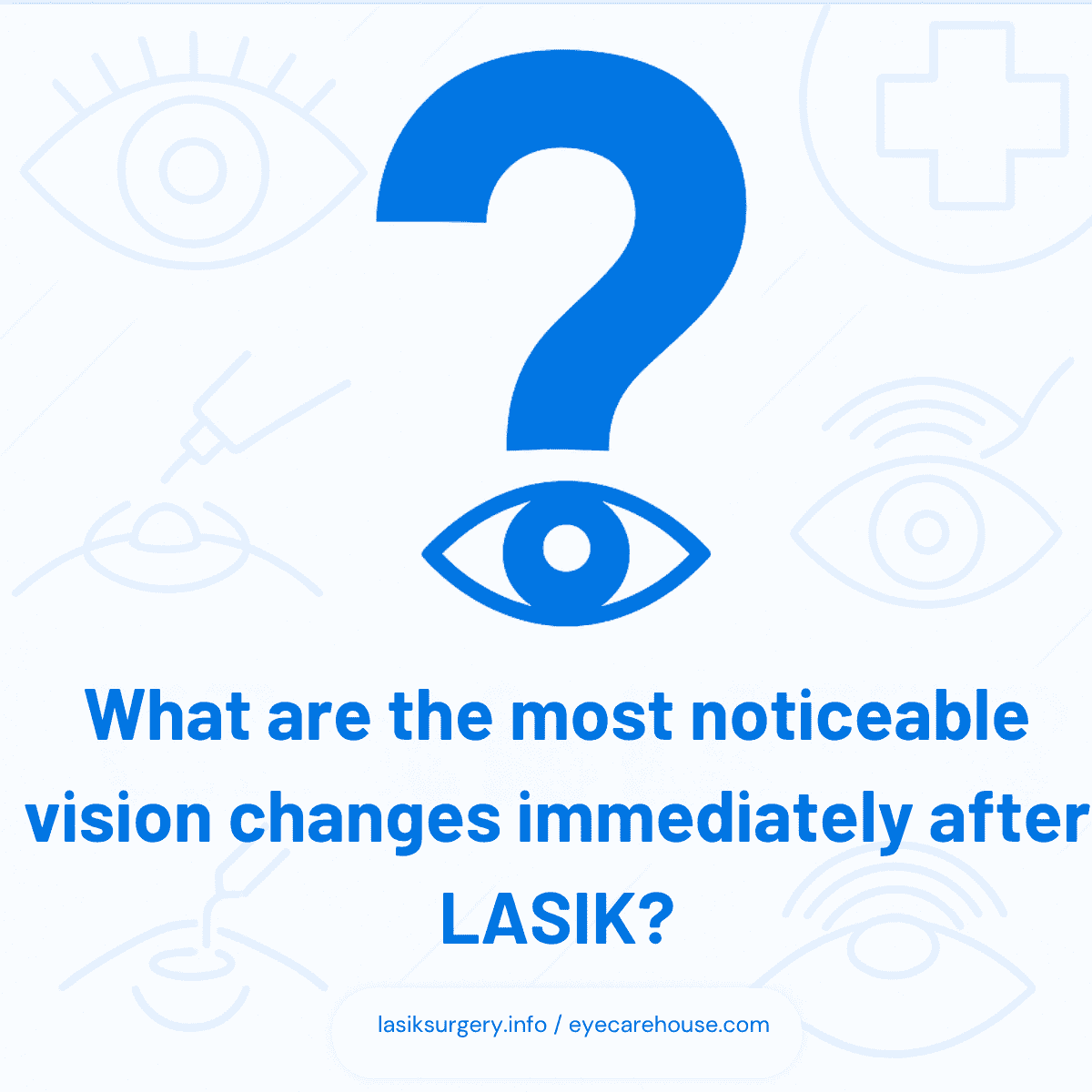
LASIK may initially increase glare or halos at night, especially around lights. These symptoms usually diminish within weeks as the eye heals and stabilizes.
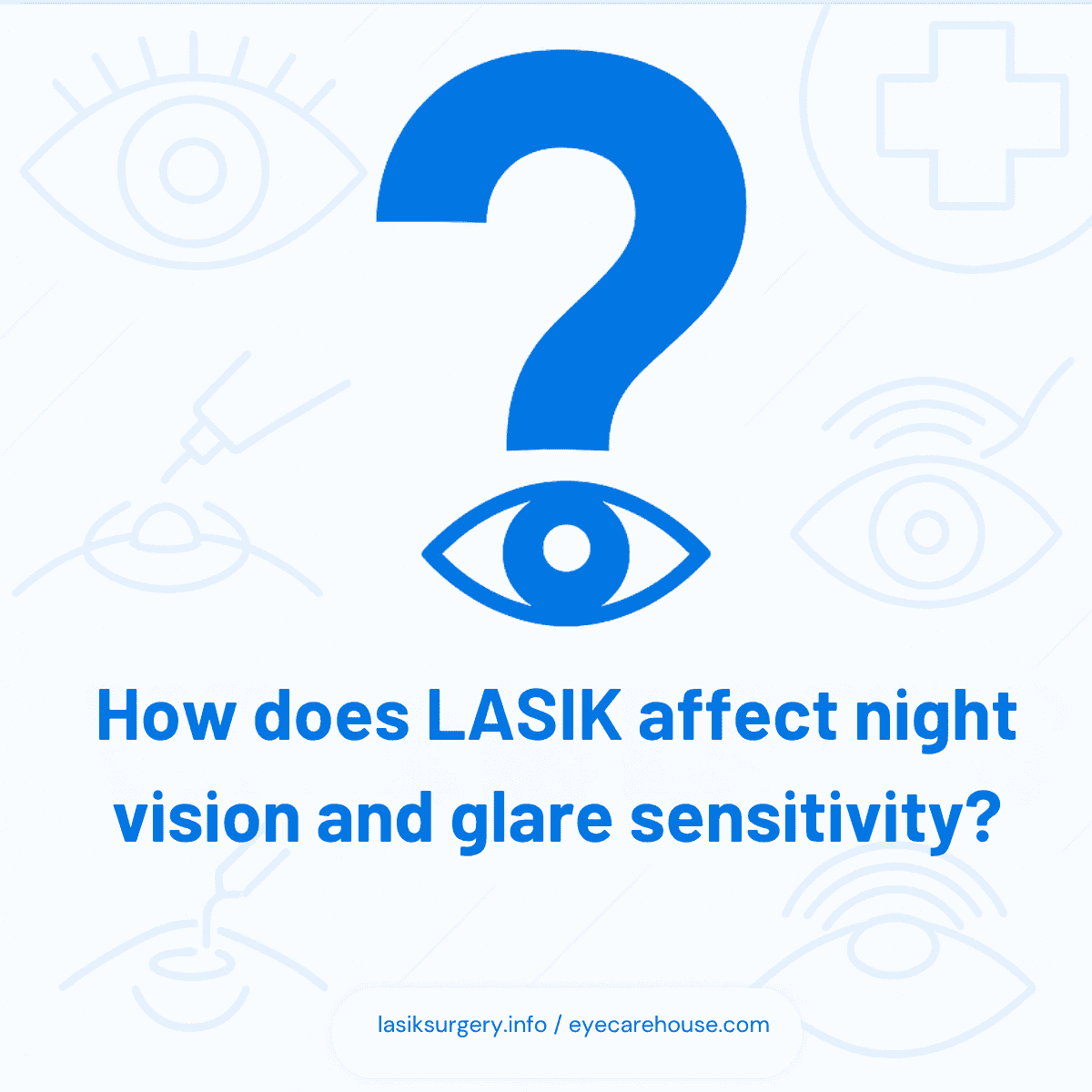
LASIK is most effective in correcting myopia (nearsightedness), but it can also treat hyperopia and astigmatism depending on individual eye conditions.
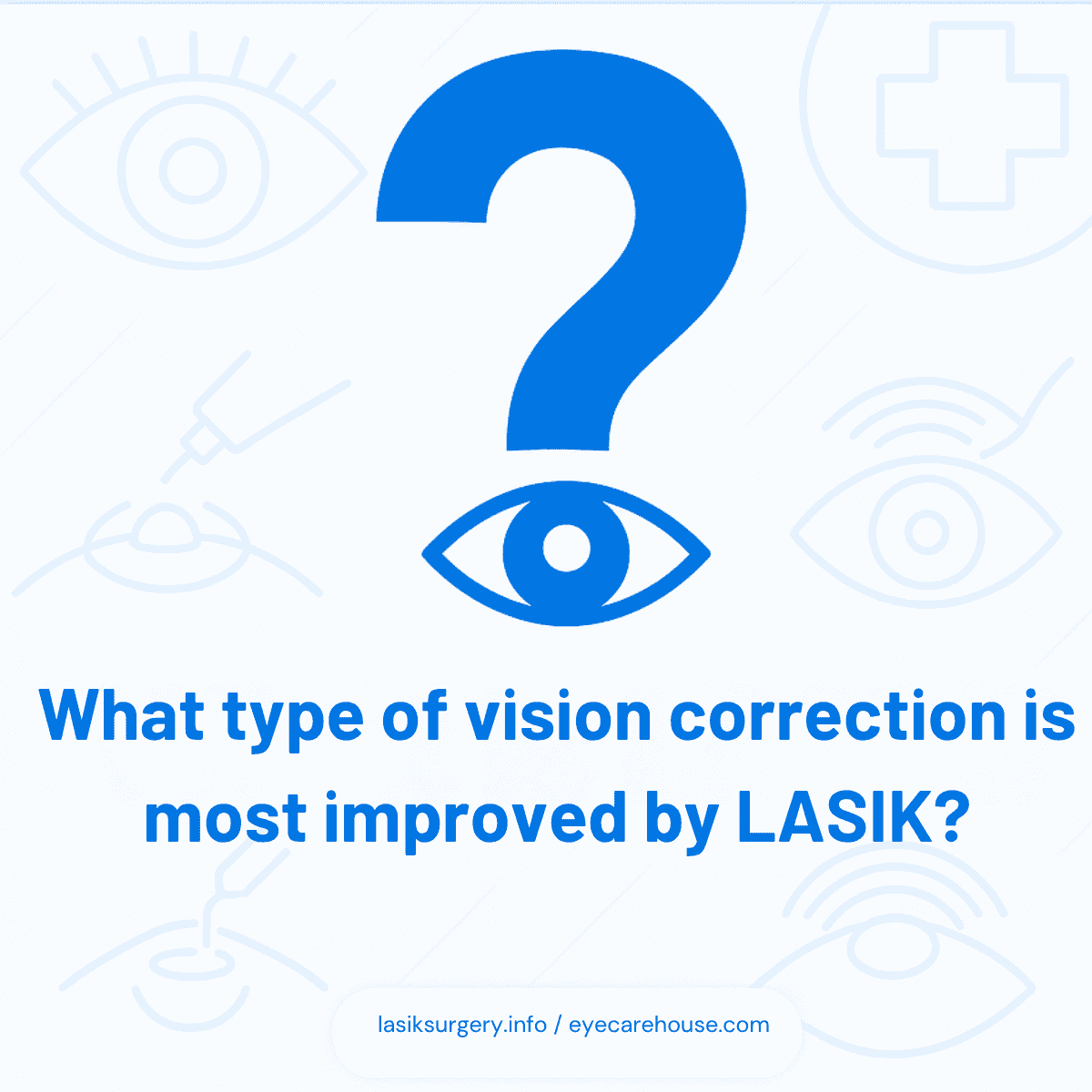
LASIK results are generally stable for years, though some patients may experience minor changes in vision due to natural aging processes such as presbyopia.
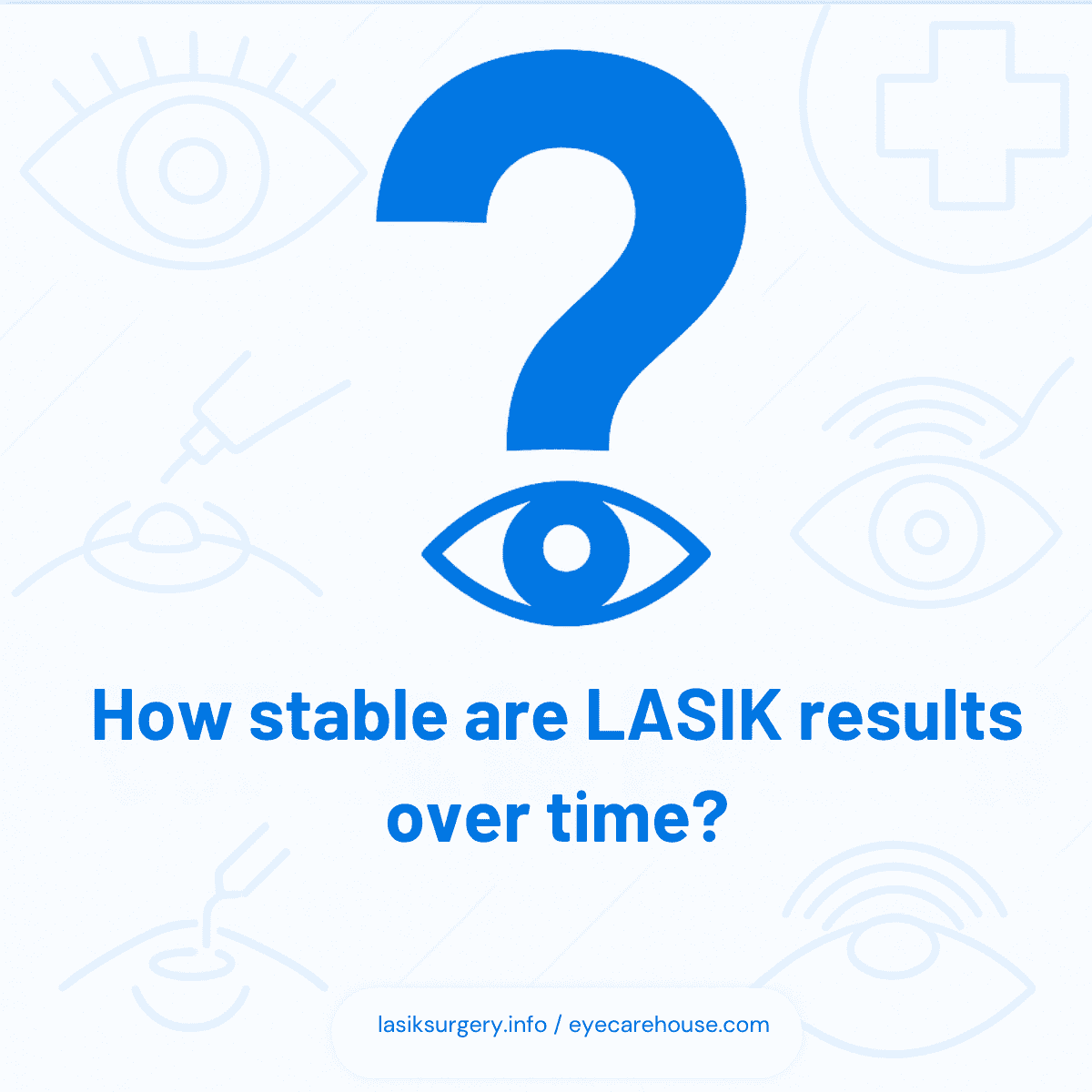
Patients often resume normal activities like working on a computer, driving, and watching TV within a couple of days post-surgery, avoiding strenuous or contact sports for about a week.
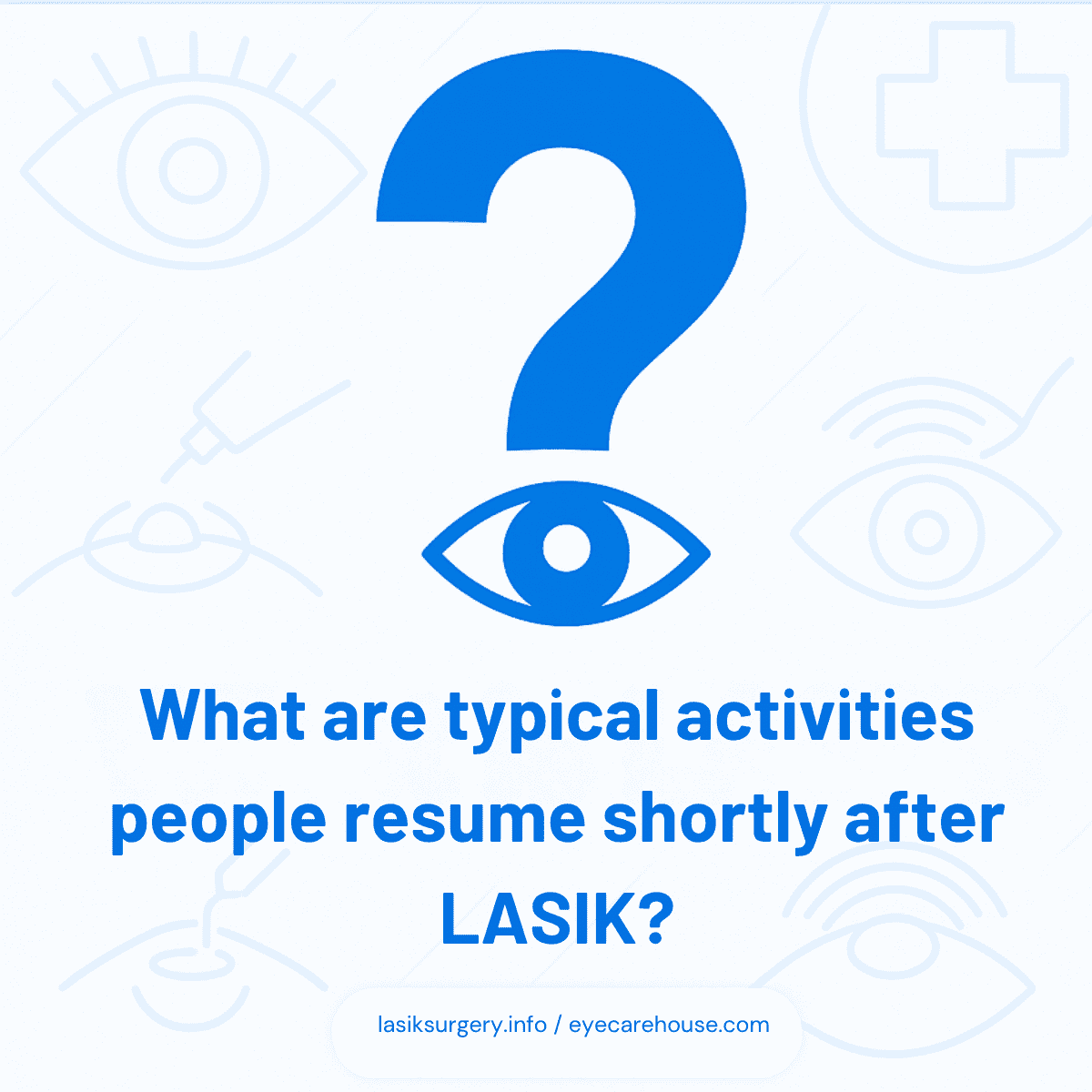
Success is often defined by achieving 20/20 vision or better without corrective lenses, improved visual clarity, and patient satisfaction with daily visual function.
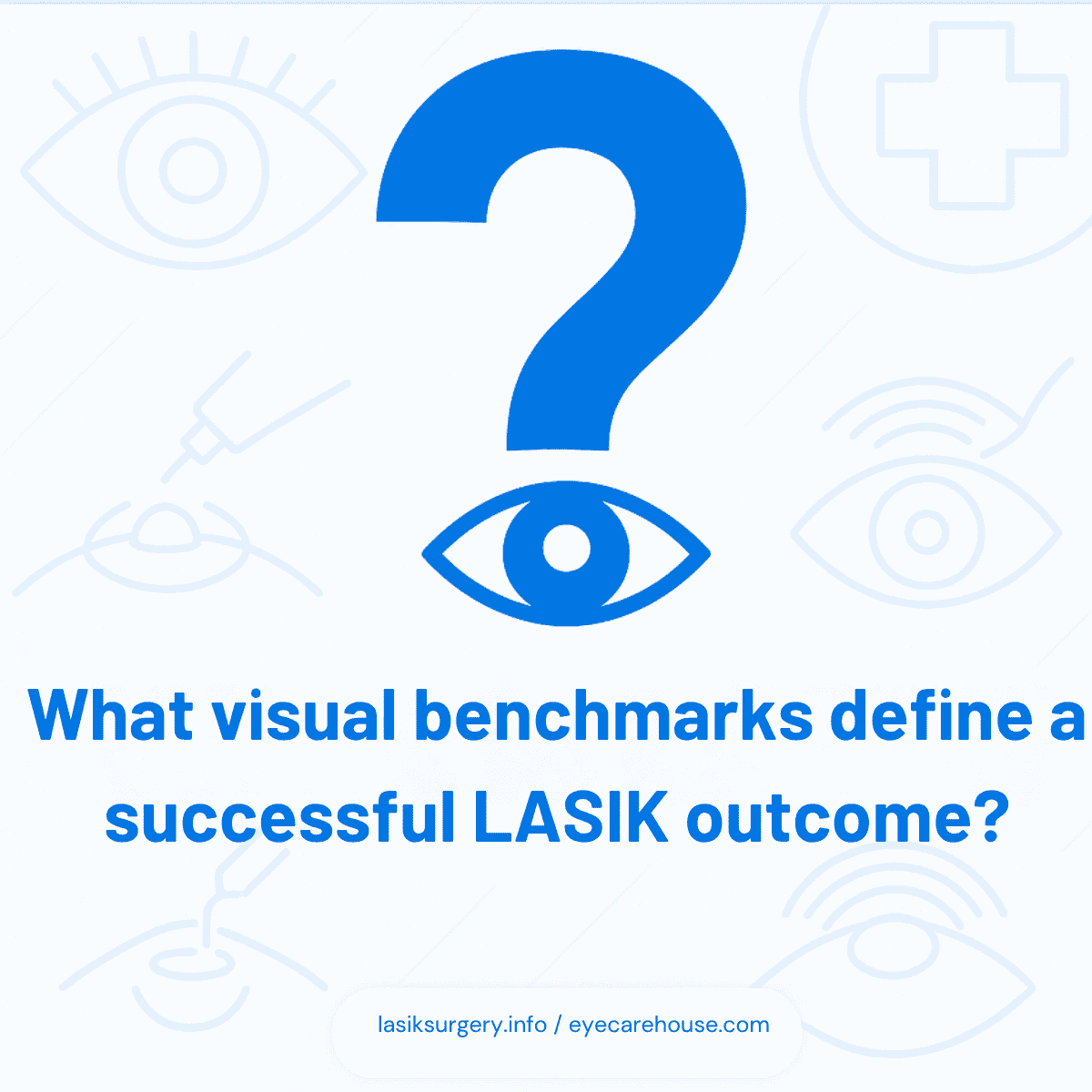
While many patients no longer need glasses for distance vision, some may still require reading glasses later in life due to age-related vision changes.
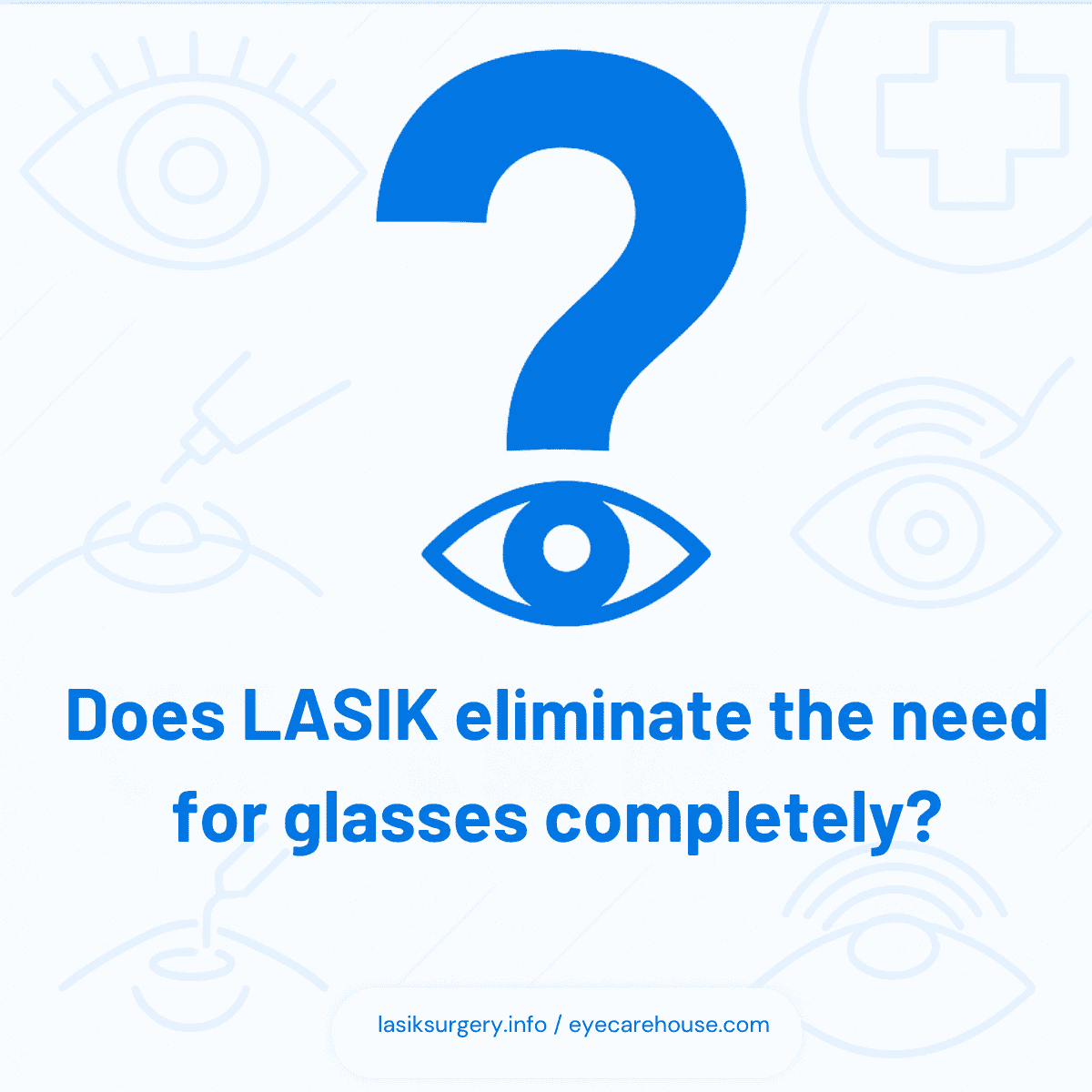
Non-contact athletes may resume training within a few days, while contact sport athletes should wait 2–4 weeks to allow full corneal healing and minimize injury risk.
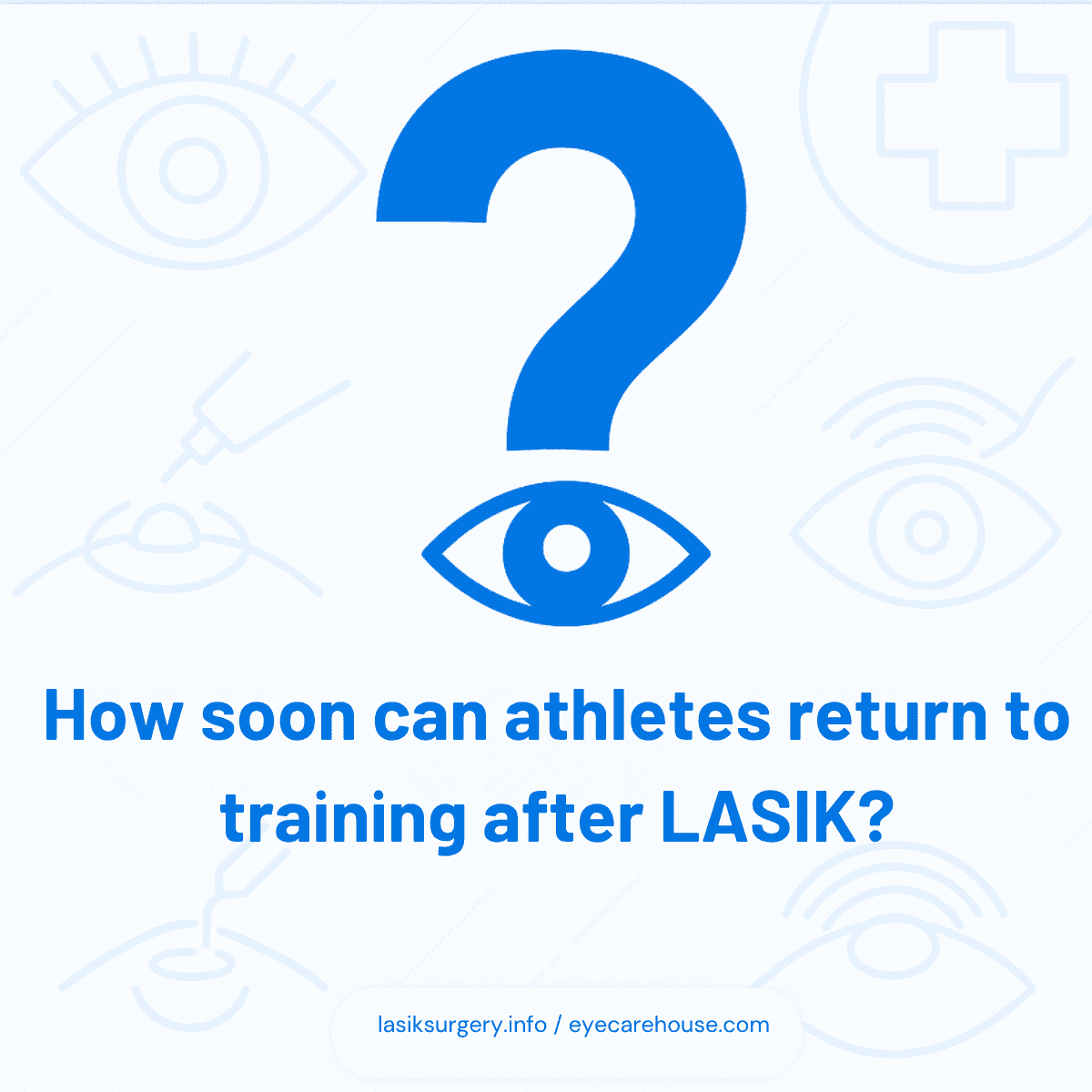
Signs include prolonged redness, persistent pain, vision regression, or increased light sensitivity beyond the normal healing timeline. Prompt consultation with your surgeon is crucial.
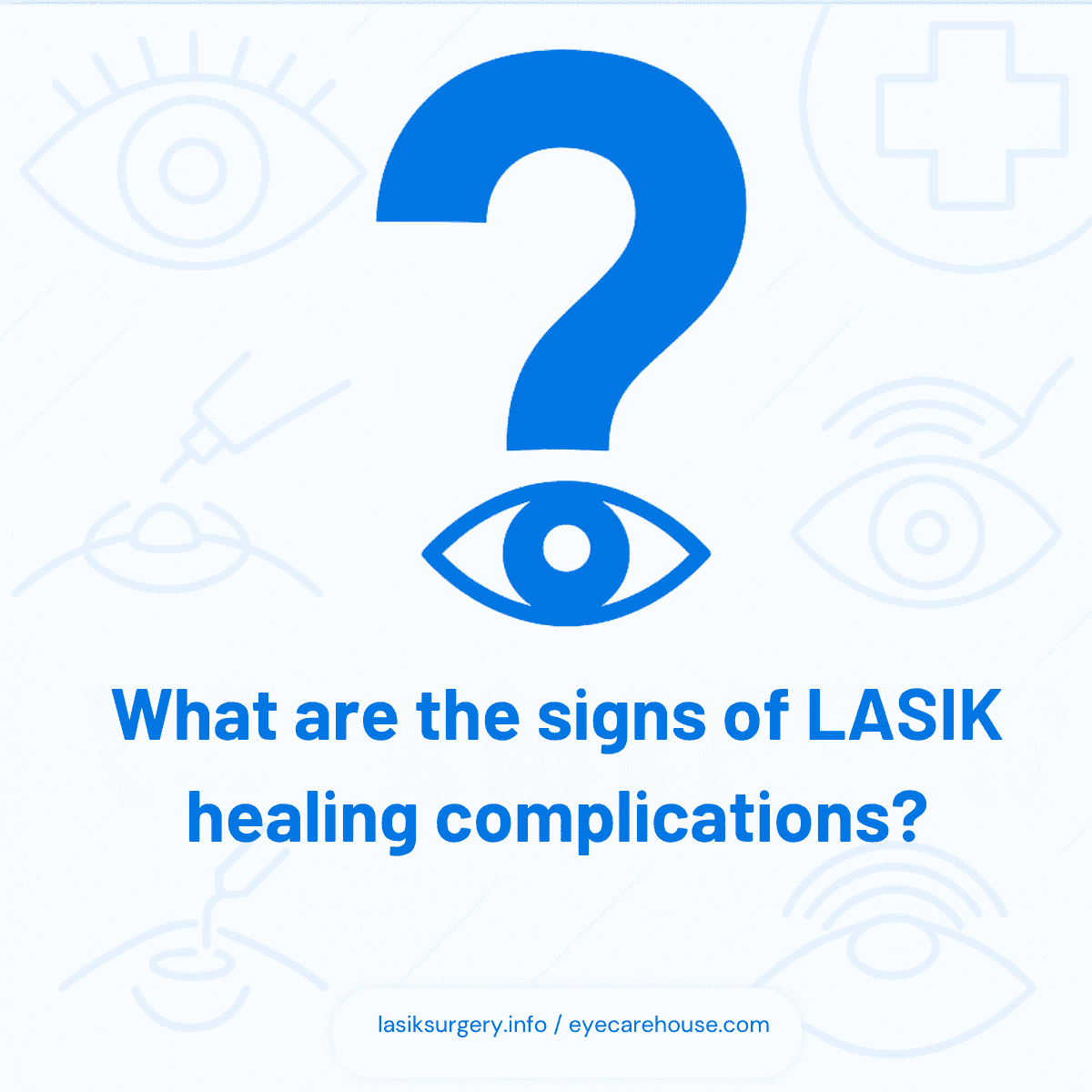
Yes, younger patients often experience faster healing and longer-lasting results. Older patients may be more prone to presbyopia or require enhancements over time.
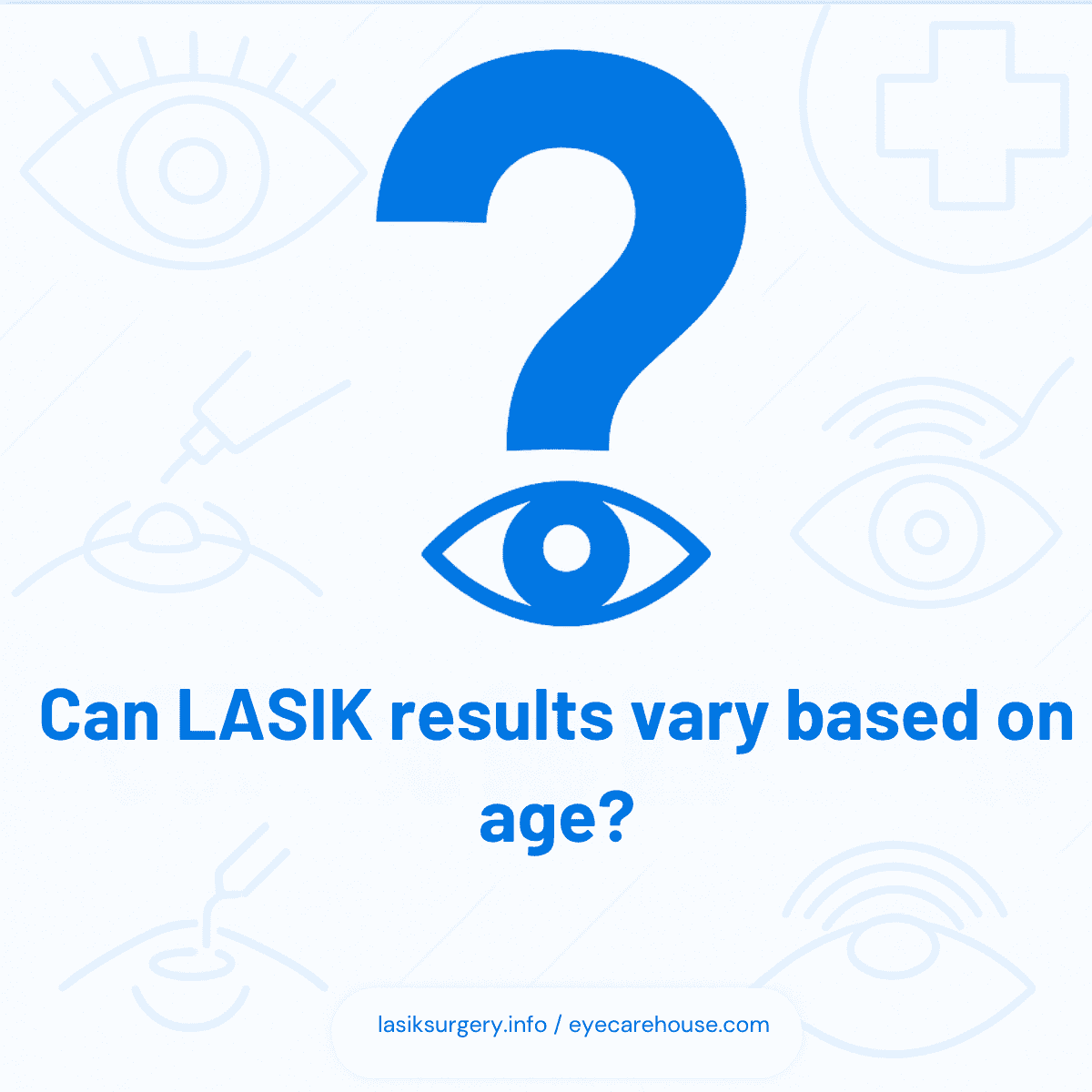
Enhancements or touch-up LASIK procedures are uncommon but may be performed if the initial result doesn’t fully meet expectations, especially in high prescriptions.
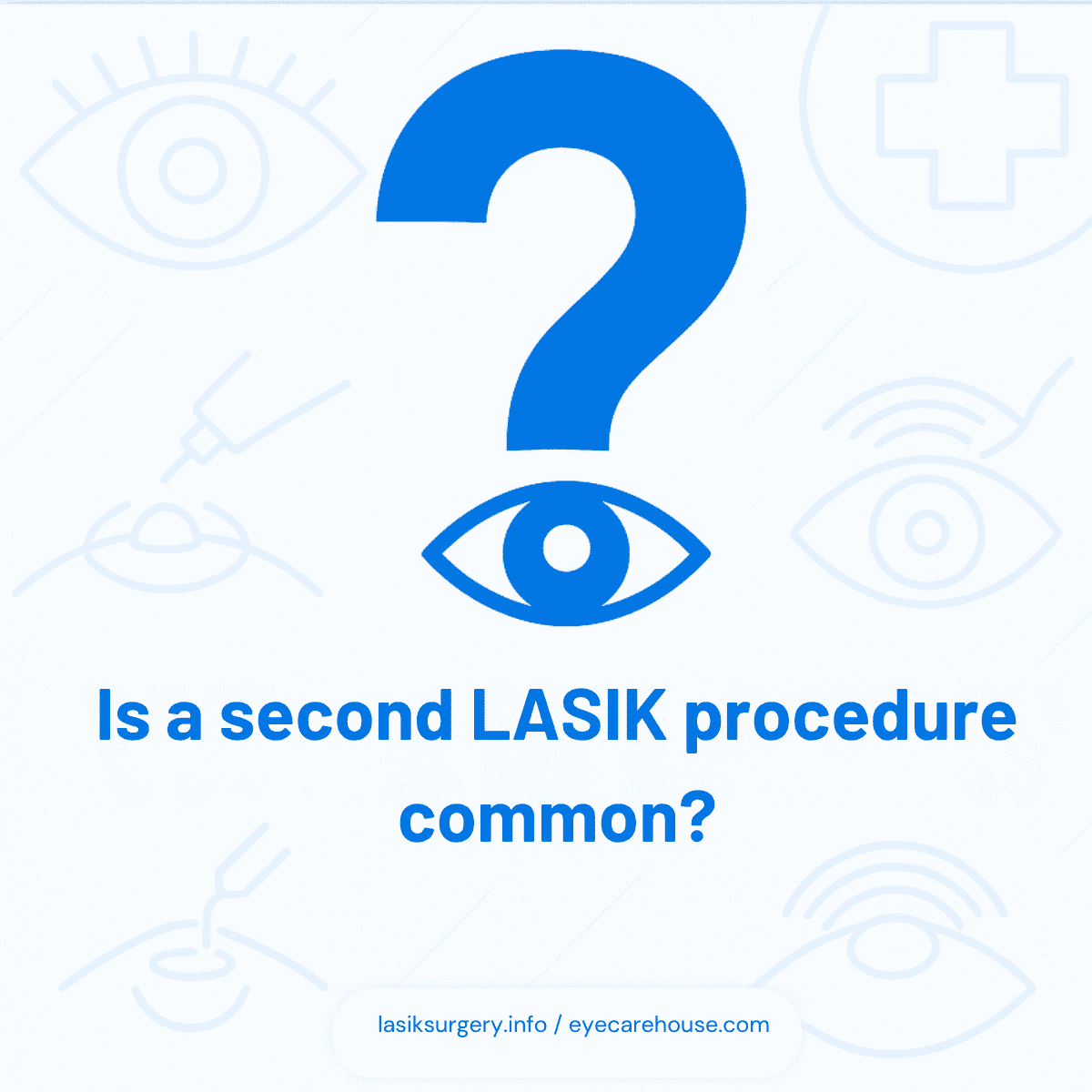
Research shows LASIK outcomes are generally consistent across genders, although hormonal differences can slightly affect dry eye symptoms post-surgery.
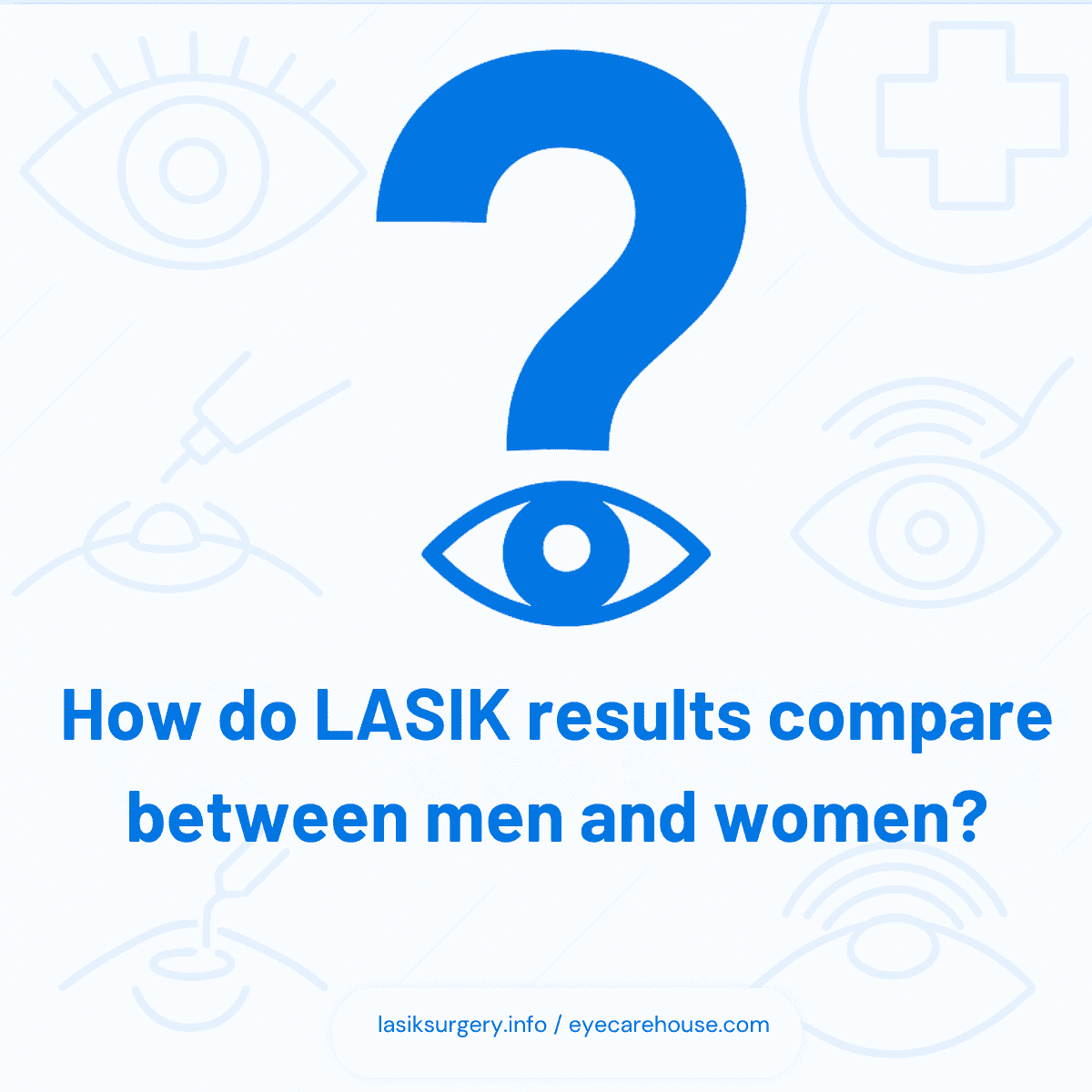
Larger pupils may increase the likelihood of night glare or halos after LASIK, but modern lasers compensate with wider treatment zones to reduce risks.
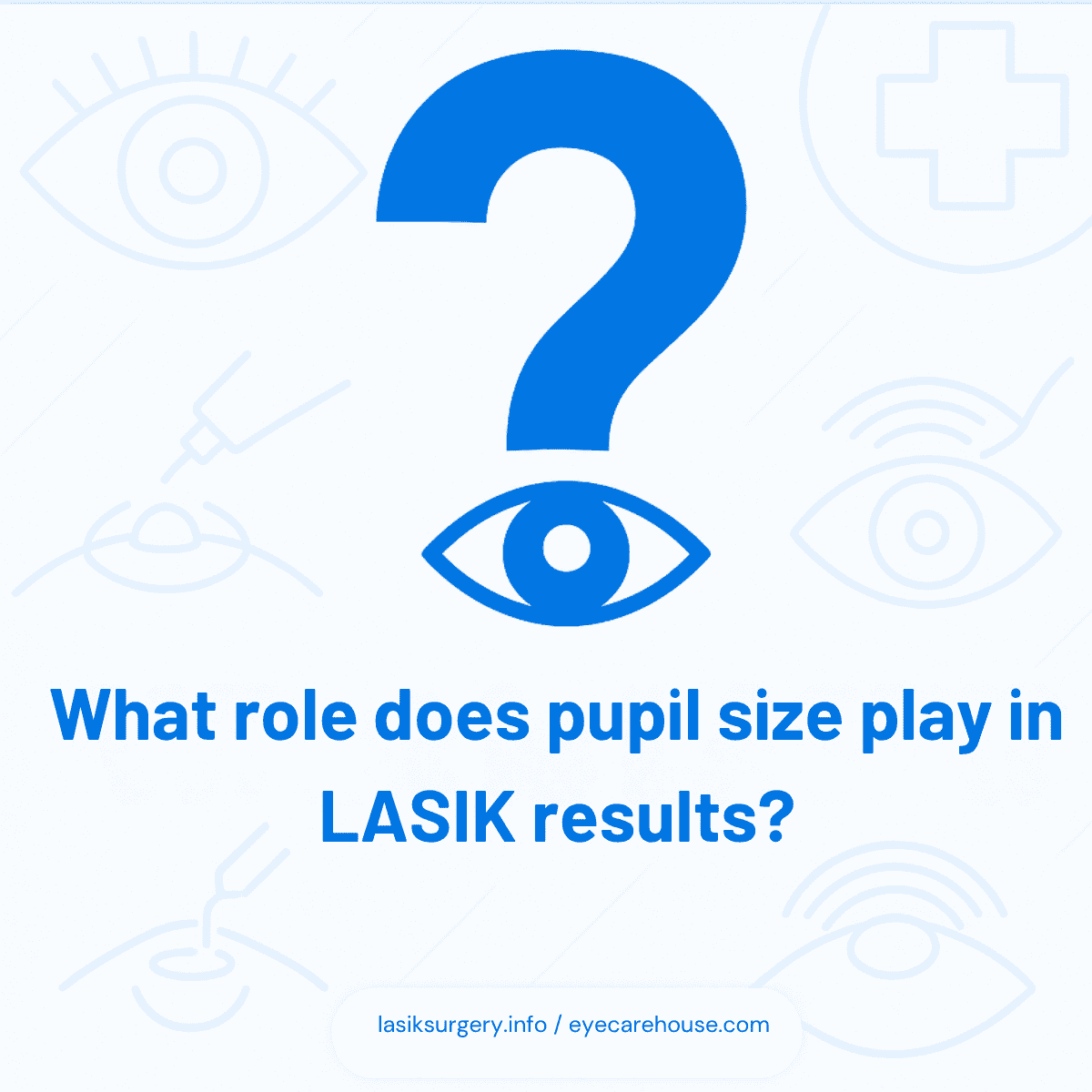
Eye dominance is crucial for monovision LASIK, a strategy used for presbyopia, where one eye is corrected for distance and the other for near vision.
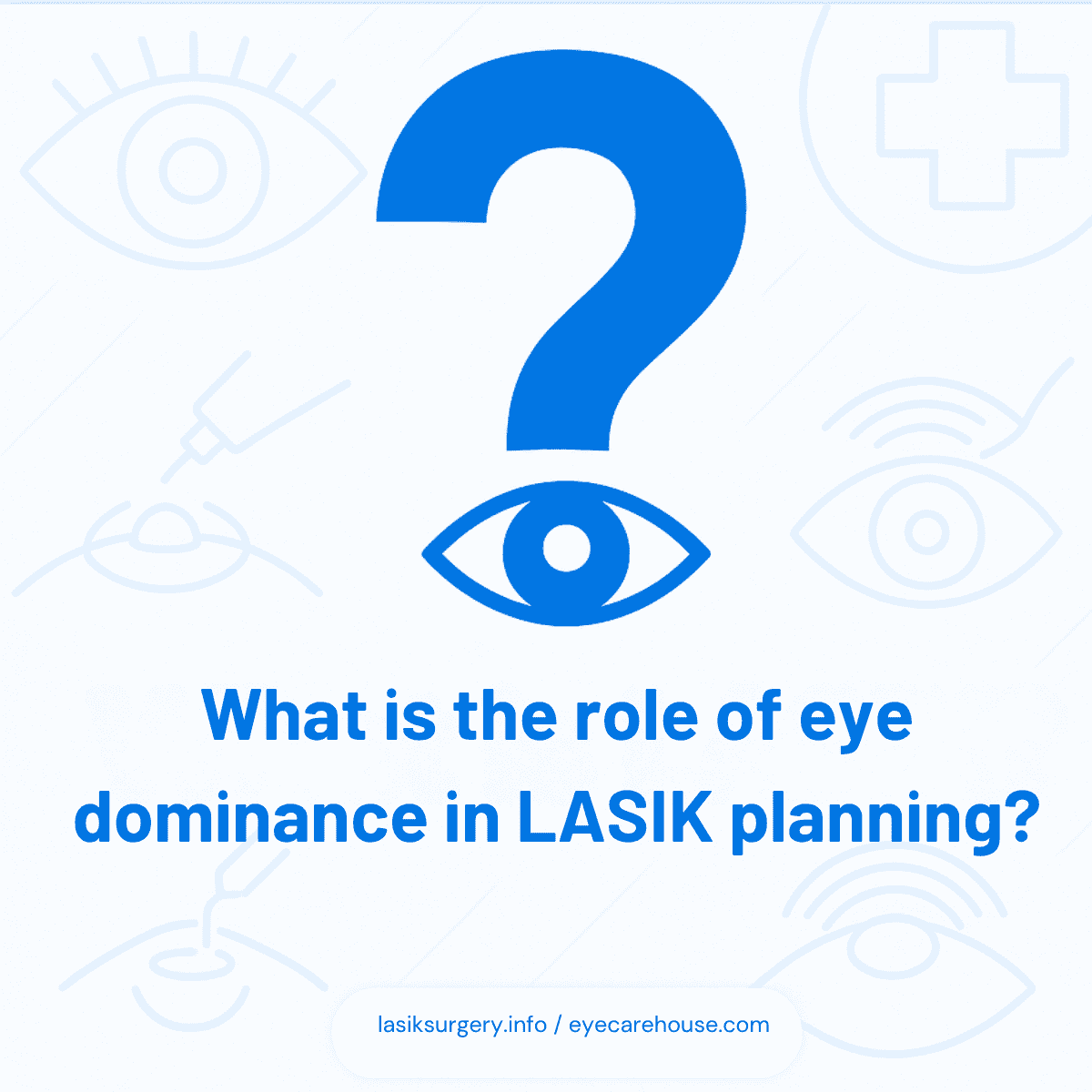
Yes, many athletes experience sharper vision and faster focus post-LASIK, enhancing performance in fast-paced environments like tennis, basketball, or golf.
